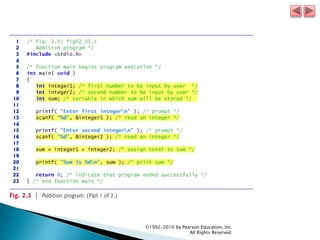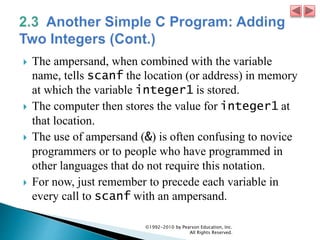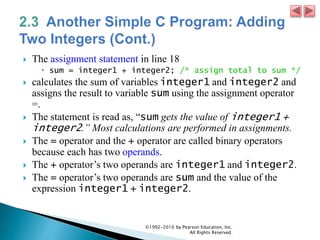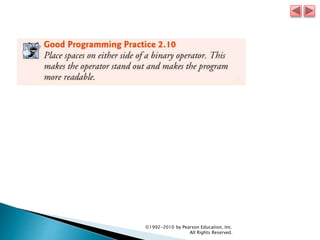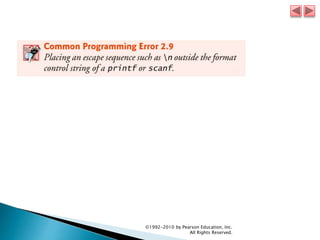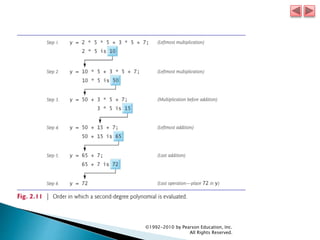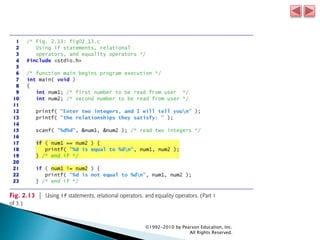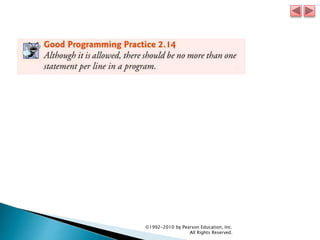This document provides an overview of basic C programming concepts like comments, functions, variables, data types, and input/output functions. It explains a simple "Hello World" program line-by-line and introduces more complex examples that demonstrate printing multiple lines, accepting user input, and performing calculations. The key topics covered include using comments, the main function, preprocessor directives, standard library functions like printf and scanf, and defining integer variables.
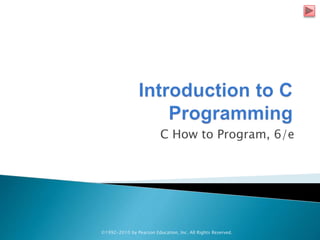





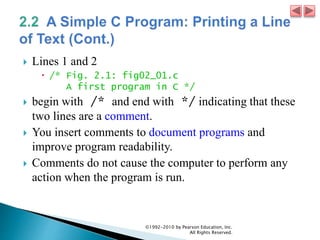

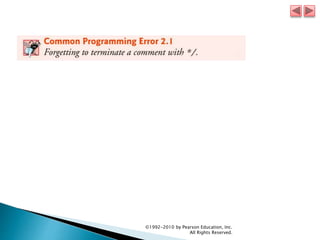







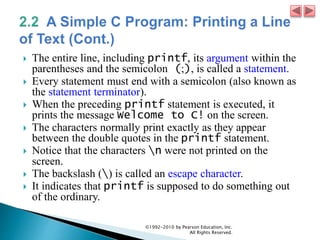








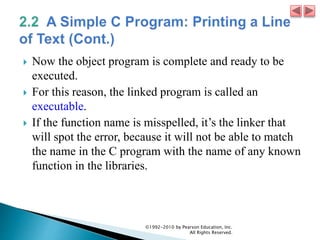






![ Our next program (fig. 3.8) uses the Standard Library
function scanf to obtain two integers typed by a user
at the keyboard, computes the sum of these values and
prints the result using printf.
[In the input/output dialog of Fig. 2.8, we emphasize
the numbers input by the user in bold.]
©1992-2010 by Pearson Education, Inc.
All Rights Reserved.](https://image.slidesharecdn.com/chtp602-240407095800-122cbd37/85/Intro-to-c-programming-with-all-basic-concept-with-clear-explanation-and-example-33-320.jpg)
